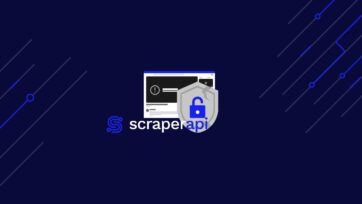Web scraping can be an immensely powerful tool for your business. From trawling consumer data on an online retailer to price comparison platforms and more, the potential application of the technology is nearly endless. With such a flexible tool in hand the savvy entrepreneur can carve out a nice advantage in their niche and really give their business a huge boost, generating leads more reliably at a much quicker pace than rivals who stick to more traditional methods. But how exactly can we make this happen? To help you and your business grow, we’ve compiled a few examples of ways you could be using web scrapers to generate leads for your business.
LinkedIn and online business community platforms are a great place to start out, particularly if you offer a service that is aimed at businesses as consumers. Whether you’re delivering content, optimising marketing or helping them stand out online it can be quite difficult to find potential customers at times, because if they already struggle to have a presence you will have a hard time finding them on search engines unless you’re really prepared to trawl through the results. With a basic web scraper setup you could be extracting business and contact information directly from sites like Crunchbase so you not only know exactly who to contact, but how. And what’s more, you won’t just be dealing with single contacts either – depending on the filters you apply to the data you could be looking at every player in that market, making it much more likely to find and close a paying customer.
Another place to look is the hub of startup culture online. If you specialise in helping businesses stand out, what better customers to have than hungry up and comers that are eager to succeed? Crawling sites like Angelist, Gust or Crunchbase could lead you to a near endless supply of potential clients, making them a ripe target for b2b web scraping for leads. If you’re a more localised business and you want to find brick and mortar clients, online business directories can be a great place to look as well. The old doorstop directory books have gone online and are huge repositories of information on potential clients, simply searching through those with a scraper can generate you more leads than you would get in weeks of manually searching. Simply start scraping the site, narrow your search parameters and zone in on businesses that are in the sector you’re interested in. You’ll have access to addresses, phone numbers and emails that you can follow up on in your own time so that you can get started closing deals fast.
As with any other practice, using web scraping to generate your leads comes with pros and cons, the relevance of which depends entirely upon the nature of the business you’re running. If you offer a service that everyone can make use of then the scattergun approach would make sense, but if you’re offering a more bespoke product or service then you want the confidence in your business that a personal approach will bring. It can be vital for a small business that wants to offer a high quality, personal product to have a visible face or voice that interacts directly with potential clients, at which point web scraping your leads may not be reliable. It’s also worth considering how a client might feel being contacted out of the blue by someone that took their contact information from a social networking site – particularly if that information is not readily available. These considerations are important to have in the back of your mind as you make your plans because they could undermine you before you even get off the ground.
Also it is worth bearing in mind however that some sites, specifically social networking sites, can be a lot more complicated to scrape because they put time and resources into preventing scrapers from doing their job well. Be that through repeated Captcha use, or specific information in the robots.txt, these sites are notorious for putting up roadblocks and generally requiring a more sophisticated approach. Additionally if you’re scraping sites like these then you’re going to run into a host of additional data that you don’t need so it’s very important to have a system in place to analyse the data thoroughly and filter out the bad stuff so you don’t end up with databases full of rubbish and hours of lost time.
But let’s say this is the solution for your business and you want to use it on an ongoing basis. How can you set up a scraper so that you can generate and chase leads reliably for the foreseeable future? The key to long term efficiency is to understand that your own time is limited, so the best bet for you and your business is to automate the things that make sense. A scraper can be configured to carry out searches based on specific parameters automatically, even at scheduled times with the right set of tools. If you have ongoing searches based on specific parameters relevant to your business interests, and you can sort, store and interpret the information in an efficient and hassle free way, then you’ll end up with a long-term flow of information that you can dip in and out of at will. A bit like having leads on tap. From there the tasks turn to general maintenance – testing your data, adjusting your scrapers if sites change their functionality and generally ensuring the integrity of their reports and you’re away – from there on out you can focus your time on the real work of following leads, making sales and delivering your product.
We hope that this has been an informative first look into the applications of web scraping when it comes to generating leads and boosting sales. If you have a web scraping job you’d like to talk to us about please contact us and we’ll get back to you within 24 hours. Happy scraping!



